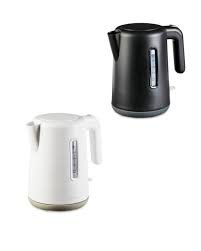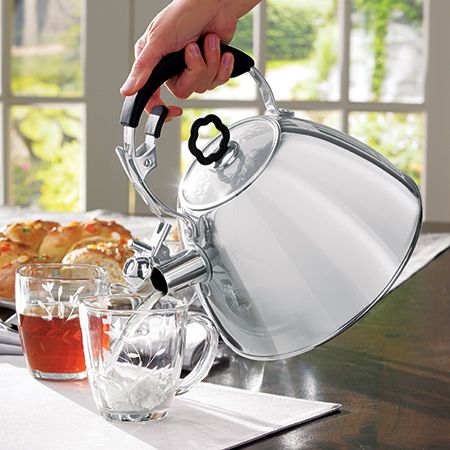Welcome to our kitchen-knife-sharpening masterclass! We all know that a well-sharpened knife is the unsung hero of every home cook’s kitchen. It glides through ingredients with finesse, making meal preparation a breeze and elevating the joy of cooking to a whole new level. But hey, let’s be real—keeping those knives sharp might sound like a daunting task, especially if you’ve been guilty of neglecting them in the past. Fear not, dear kitchen wizards! In this friendly guide, we’ll take you through the art of maintaining razor-sharp edges on your trusty blades, without the hassle. Get ready to slice, dice, and chop like a culinary pro, because blunt knives have no place in your kitchen kingdom!
Importance of Sharp Kitchen Knives
Picture this: you’re in the middle of whipping up your favorite recipe, all excited and ready to go. But wait, your kitchen knives are as dull as a butter knife! Suddenly, what should have been a fun and efficient cooking experience turns into a frustrating struggle. That’s where the importance of sharp kitchen knives shines through! Sharp knives aren’t just a fancy chef’s preference; they’re the secret sauce to unleashing your culinary superpowers. Imagine effortlessly gliding through vegetables, fruits, and meats with precision and grace. A sharp knife not only saves you time but also ensures your ingredients are treated with the respect they deserve, preserving their flavors and textures. So, say goodbye to squashed tomatoes and uneven slices, and say hello to kitchen bliss with sharp knives by your side.
The Benefits of Proper Knife Maintenance
Ah, proper knife maintenance—the unsung hero of kitchen wizardry! You might wonder why spending a little extra TLC on your knives is worth it, but trust us, the benefits are simply magical. First and foremost, regular maintenance keeps those blades razor-sharp, turning you into a slicing and dicing maestro. No more struggling with stubborn veggies or tearing up over onions—it’s all about smooth, effortless cuts! But that’s not all. By pampering your knives with love and care, you extend their lifespan, saving you from the heartache of having to bid farewell to your favorite kitchen companions. Plus, sharp knives are safer knives! When you don’t have to apply extra force due to a dull edge, the chances of accidents decrease significantly. So, grab that honing rod, embrace your inner knife whisperer, and let the benefits of proper knife maintenance work their magic in your kitchen kingdom!
Knife Anatomy: Types of Kitchen Knives
Let’s dive into the fascinating world of knife anatomy and explore the delightful diversity of kitchen knives! Just like a family of culinary superheroes, each knife has its unique powers and specialties. First up, we have the trusty chef’s knife—the all-rounder that can conquer everything from veggies to meats with ease. Then, say hello to the serrated knife, your best buddy for slicing through crusty bread like a champ. Feeling fancy? The elegant paring knife is perfect for delicate tasks like peeling, deveining, and intricate designs. Oh, and let’s not forget the mighty utility knife, bridging the gap between the chef’s knife and paring knife for mid-sized missions. And that’s just the beginning! From the versatile Santoku to the flexible boning knife, each blade has its own special purpose, waiting to unleash its magic in your kitchen adventures. So, get to know your kitchen knights, and let them help you conquer culinary quests like never before!
Some types of kitchen knives:
- Chef’s Knife: An all-purpose knife with a wide, curved blade for slicing, dicing, and chopping.
- Paring Knife: A small knife with a pointed tip, ideal for peeling, trimming, and intricate tasks.
- Bread Knife: A serrated knife designed to slice through bread without squashing it.
- Utility Knife: A versatile knife that falls between a chef’s knife and a paring knife, suitable for various tasks.
- Santoku Knife: A Japanese-style knife with a broad blade and granton edge, great for slicing, dicing, and mincing.
- Carving Knife: A long, slender knife used for carving large cuts of meat, such as roasts or poultry.
- Boning Knife: A narrow, flexible knife used for removing bones from meat and poultry.
- Fillet Knife: A thin, flexible knife designed for filleting fish and deboning delicate meats.
- Cleaver: A heavy, rectangular knife used for chopping through bones and tough ingredients.
- Nakiri Knife: A Japanese vegetable knife with a straight blade, perfect for slicing and dicing veggies.
- Tomato Knife: A small serrated knife specially designed for slicing tomatoes neatly.
- Steak Knife: A small, sharp knife with a serrated edge, typically used for cutting steak at the table.
- Cheese Knife: Various types of knives designed for cutting and serving different types of cheese.
- Peeling Knife: A small, sharp knife with a curved blade for peeling fruits and vegetables.
- Oyster Knife: A short, stubby knife with a pointed tip, used for shucking oysters.
Common Causes of knife Dullness
Let’s talk about the common culprits behind those not-so-happy, dull knives. We’ve all been there—struggling to slice a tomato or feeling like we’re sawing through a loaf of bread. One major cause of knife dullness is the cutting surface. Using hard surfaces like glass or ceramic cutting boards can be tough on your blades and lead to premature dulling. Another sneaky reason is the frequency of use. Hey, we love using our knives as much as you do, but with great chopping power comes great responsibility! Overusing your knives without proper maintenance can take a toll on their sharpness. And speaking of maintenance, not cleaning and storing your knives properly can be a real mood dampener. Leaving them dirty or tossing them haphazardly in drawers can lead to unnecessary wear and tear. But don’t fret! With a little know-how and TLC, we’ll keep your knives sharp and ready to tackle any culinary adventure!
Signs Your Knives Need Sharpening
Let’s play detective and uncover the signs that your beloved knives are in need of a little sharpening TLC. First off, if you notice your once-awesome blades struggling to slice through ripe tomatoes or turning herbs into a mushy mess, that’s a surefire sign it’s time for a sharpening intervention. Keep an eye out for jagged edges and nicks on the blade, as those are telltale signs of dullness. Another clue is when your knife starts slipping and sliding instead of gripping the food with precision. Oh, and that once satisfying “shhht” sound while cutting? If it’s been replaced with an unimpressive “thud,” that’s your knives’ way of saying, “Help, I need sharpening!” So, don your detective cap and use these signs as your trusty clues to keep your kitchen knives sharp and ready for any culinary caper!
Signs Your Knives Need Sharpening:
- Struggling to cut through food smoothly.
- Jagged edges and visible nicks on the blade.
- Knife slipping and sliding while cutting.
- Increased force required for cutting.
- Squashing or bruising fruits and vegetables instead of clean slices.
- A dull sound (thud) instead of the satisfying slicing sound (shhht).
- Uneven cutting or tearing of meat or bread.
- Difficulty in creating precise and thin slices.
- Increased time and effort needed to complete cutting tasks.
- Visible wear and tear on the blade’s surface.
Different Methods of Knife Sharpening
Ready to sharpen your way to kitchen master ? Let’s explore the different methods of knife sharpening to keep those blades gleaming! First up, we have the classic whetstone—your trusty sidekick for manual sharpening. With a bit of practice, you’ll be wielding this stone like a pro, restoring your knives to razor-sharp glory. Next, say hello to the honing rod, perfect for fine-tuning and maintaining the edge between sharpenings. Just a few swipes, and your knives will be back in action! For those who crave convenience, electric knife sharpeners are here to save the day. Pop your knife in, and let the magic happen as the machine does the work for you. Finally, for on-the-go knife emergencies, pocket knife sharpeners and pull-through sharpeners have got your back. With these sharpening methods in your arsenal, you’ll be slicing and dicing like a seasoned chef in no time!
Different Methods of Knife Sharpening:
- Whetstone: A manual method involving rubbing the blade against a sharpening stone to create a keen edge.
- Honing Rod: Used for realigning and refining the blade’s edge, extending the time between actual sharpening sessions.
- Electric Knife Sharpeners: Automated devices that grind and sharpen the knife’s edge with precision and ease.
- Pocket Knife Sharpeners: Compact and portable tools for sharpening knives on the go.
- Pull-Through Sharpeners: Easy-to-use gadgets with pre-set angles, ideal for quick touch-ups and maintaining knife sharpness.
- Diamond Stones: Sharpening stones coated with diamond particles for efficient sharpening of even the hardest steel.
- Ceramic Rods: Similar to honing rods but made of ceramic material, best for quick touch-ups.
- Guided Sharpening Systems: Kits with angle guides and multiple stones for consistent and precise sharpening results.
- Oil Stones: Traditional sharpening stones used with oil for lubrication, ideal for coarse sharpening.
- Water Stones: Sharpening stones that require water as a lubricant, providing a smoother finish for the knife’s edge.
Essential Tips for Keeping Your Knives Sharp
Now that you’ve mastered the art of knife sharpening, let’s dive into some essential tips to keep those blades sharp as ever! First and foremost, practice proper knife handling techniques. Keep that knife at the right angle and apply gentle pressure for smooth cuts that won’t wear out your edge. Regular maintenance is key, so get into the habit of honing your knives before each use to keep them in tip-top shape. When it’s time for cleaning, bid farewell to the dishwasher—hand wash your knives with love and care. And when it’s time to rest, let them do it in style! Store your knives in a knife block or on a magnetic strip to avoid potential nicks and dings. Lastly, be kind to your knives and avoid chopping through frozen foods or using glass cutting boards. Follow these friendly tips, and you’ll have a razor-sharp squad of kitchen knives that’ll make your culinary adventures a breeze! Some essential tips are given below to keep your cooking hero sharp:
- Practice Proper Knife Handling Techniques: Use the right cutting technique, maintain the correct angle, and apply gentle pressure while slicing to avoid unnecessary wear on the blade.
- Regularly Hone Your Knives: Honing realigns the blade’s edge, keeping it sharp between actual sharpening sessions. Make it a habit to hone your knives before each use.
- Hand Wash Your Knives: Avoid the dishwasher! Hand wash your knives with warm soapy water and a soft sponge to prevent damage to the blade and handle.
- Safe Knife Storage:Store your knives in a knife block or on a magnetic strip to protect the edge and prevent them from bumping into other utensils.
- Choose the Right Cutting Board:Opt for cutting boards made of wood or soft materials like bamboo to minimize blade impact and reduce dulling.
- Avoid Cutting Frozen Foods:Frozen foods can chip and damage the knife’s edge. Thaw ingredients before cutting to preserve the sharpness.
- Say No to Glass Cutting Boards:Glass cutting boards are harsh on knife edges, leading to premature dullness. Stick to softer surfaces like wood or plastic.
- Regularly Clean and Dry Your Knives:Promptly clean your knives after each use and dry them thoroughly to prevent corrosion and maintain sharpness.
- Use a Knife Guard or Blade Protector:When storing knives in a drawer, use a knife guard or blade protector to avoid contact with other utensils and prevent dulling.
- Get Professional Sharpening when Needed:If your knives are significantly dull or damaged, consider getting them professionally sharpened to restore their optimal performance.
Knife Sharpening Kits
Let’s talk about a handy tool that’ll level up your knife-sharpening game: knife sharpening kits! These nifty kits are like a magic spellbook for keeping your blades razor-sharp. Picture this: you open up the kit, and voilà! You’ve got everything you need to transform your dull knives into slicing sensations. Most kits come with a variety of sharpening stones with different grits, perfect for coarse and fine sharpening. Plus, they often include angle guides, making it a breeze to achieve consistent and precise results. Whether you’re a seasoned sharpener or a newbie to the game, these kits are designed to be user-friendly, taking the guesswork out of knife sharpening. So, say goodbye to dullness and hello to slicing and dicing with ease! Embrace the power of the knife sharpening kit and unleash your inner culinary hero.
Knife Sharpening Kits:
Variety of Sharpening Stones:
- Different grits for coarse and fine sharpening.
- Allows you to customize the sharpening process based on the knife’s condition.
Angle Guides:
- Assists in maintaining a consistent sharpening angle.
- Ideal for achieving optimal sharpness without guesswork.
Honing Rod:
- Some kits include honing rods for between-sharpening maintenance.
- Keeps the knife’s edge aligned and sharp during regular use.
Safety Features:
- Many kits have safety guards to protect your hands during sharpening.
- Prevents accidental slips and injuries.
User-Friendly Instructions:
- Comes with detailed instructions for beginners and advanced users.
- Makes the sharpening process easy to understand and follow.
Portable Carrying Case:
- Some kits include a storage case for easy transport and organization.
- Keeps all the sharpening tools in one place, ready for use anytime.
Versatility:
- Suitable for various types of kitchen knives, outdoor knives, and even scissors.
- A versatile kit for all your sharpening needs.
Long-Lasting Investment:
- Provides a cost-effective solution compared to frequent professional sharpening.
- A long-lasting investment for maintaining your knives in top condition.
Conclusion
Congratulations, kitchen superheroes! You’ve now unlocked the secrets to keeping your kitchen knives razor-sharp and ready for any culinary adventure. Remember, the key is not just about sharpening but also about showing your knives some love and TLC regularly. With proper knife handling techniques, regular honing, and safe storage, you’ll ensure your trusty blades stay in top-notch condition. Avoid those frozen food chopping mishaps, bid adieu to glass cutting boards, and embrace the magic of knife sharpening kits when needed. By following these friendly tips, you’ll be slicing, dicing, and chopping like a seasoned chef, all while preserving the joy of cooking and making meal prep a breeze. So, let’s raise our knives (safely, of course!) to a sharp, efficient, and happy kitchen life! Happy sharpening, and happy cooking!




